The Celic Dere Monastery
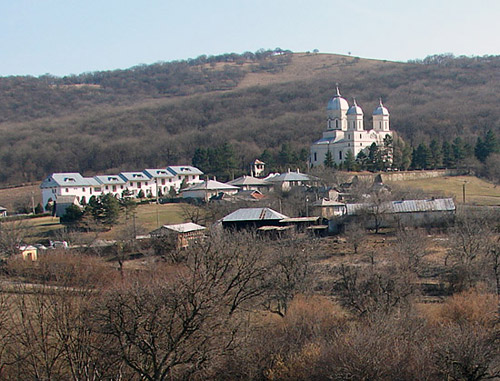
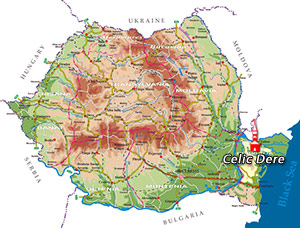
The Celic Dere Monastery is situated in Frecatei Commune, in Tulcea County and is one of the most well known monasteries in Dobrogea, considered the center of Orthodoxism of the area.
It is named after the nearby river, which translated from Turkish means “River of Steel”. According to the existing documents, the first church was built here at the beginning of the 19th century by the bishop Athanasie Lisivencof. Today, a cemetery can be found on this land. The people that built the church were priests from Transylvania and Basarabia, who had lived on the Athos Mountain, in Greece.
The little church burnt around the 1840s, the sultan Abdul-Medgid (1839-1861) from Constantinople approved to the building of a new church. Thus, in 1846, the first church was built, with “The Assumption of the Holy Virgin” as its dedication day and a chapel with “The Holy Archangels Michael and Gabriel” as its dedication day.
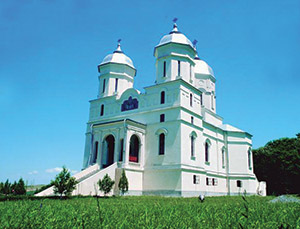
After a short time, the monks were moved to Saon, where they built another monastery. At Celic Dere the monks were replaced by nuns. In time, the hierarchs of Lower Danube supported the efforts of the nuns and thus, in 1901 the bishop Partenie Clinceni started to build the monumental church with semi-basement. For some time this served as a winter chapel. The construction, whose architect was Toma Dobrescu, was only completed in 1932, and was dedicated on the 22nd of October of the same year. The interior was painted by Gheorghe Eftimiu, and the altar screen covered in gold, was done by Ion Dinea.
During the next years, a studio for religious painting, a primary school for adults under the age of 40, a workshop for rugs and traditional sewing, were founded under the care of bishop Nifon.
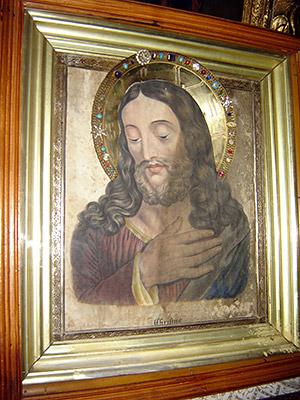
The icon that cleans itself
Pilgrims come to this place to bow with great hope in God’s power.
One of the most important icons is the one representing our Lord Jesus Christ, brought here around 1806 – 1812. It can be seen in the Chapel Church and bears the name of “The icon that cleans itself” because at one point the icon was blackened by the passing of time but then, as a miracle, the Savior’s face lightened.
The legend says that the icon was brought by a soldier. He told the monks that even though it looked like that, one day it would clean itself, and the eyes of Christ would open. After almost 200 years from that day, more than half of this icon is now lightened.
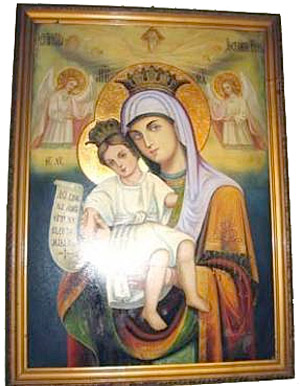
The icon of the Virgin Mary Nerosaiskaia
There is also an icon of the Virgin Mary about which has been said that it survived two arsons. It initially belonged to a family living in the Nerusai Commune from Basarabia. After the arson the only thing left was the blackened icon. The owners kept the icon with piety in their new house but, after they passed away, the descendants wanted to replace it. Not knowing what to do with the icon, they threw it into the fire but the flames burst out of the fireplace and the icon remained intact. Starting to fear, the people have decided to place it in a location of faithfulness in a clean room. It is also said that one year, around Easter’s Eve, the owner went into the room to get the azyme for the following Easter ceremony. He was stunned by the radiant light coming from the icon and heard the Virgin Mary saying “Take me from here to where the virgins are gathered for I wish to go with them for obedience in Turkey”. And so, the icon arrived to the Heruvima Church where young women wanted to dedicate themselves to monastic life. After the liberation of Dobrogea from the Turkish reign, accompanied by pilgrims, the icon was brought to Celic Dere Monastery. Here, the archimandrite father, Athanasie, a group of priests and numerous faithful people greeted the icon. It is said that two of the monks were ill but the moment the icon passed over their heads, they instantly recovered.
Because of the war in 1916, the nuns had to seek refuge so they hid all their priceless possessions in cave inside the monastery grounds. During their first night in the recourse, the nun Singlitichia, the sexton on duty, dreamt of a voice coming from the icon telling her: “Take me from where you have hidden me for I am the one to protect you”. Thus, the nuns returned to the monastery and placed the icon back in the church. In the following two years, there were no incidents, in spite of the Bulgarian army occupation. Contrariwise, the icon was taken in numerous processions in neighboring villages and people would get help from the Virgin Mary.

 Dobrogea Monasteries
Dobrogea Monasteries Saint Parascheva
Saint Parascheva Romania Map
Romania Map

